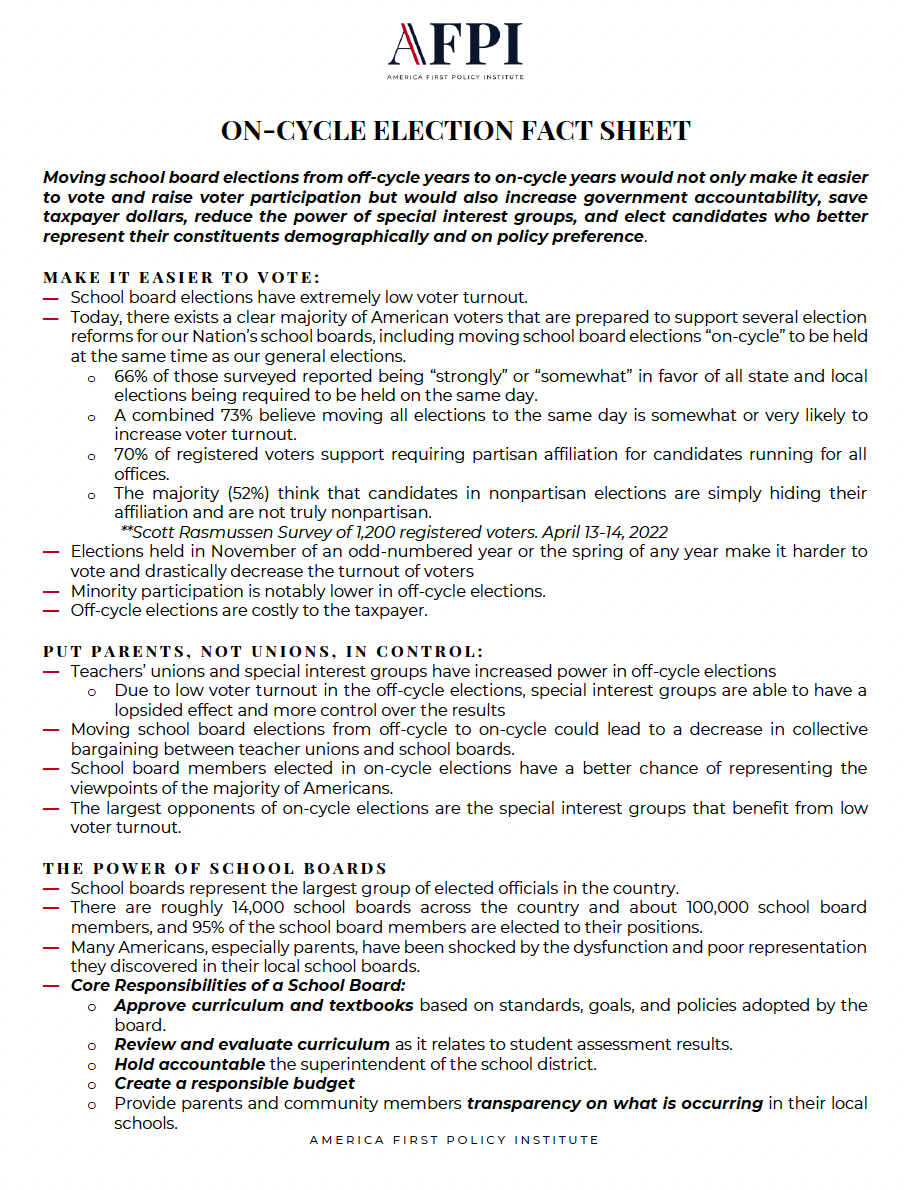July 25, 2022
On-Cycle Election Fact Sheet
Moving school board elections from off-cycle years to on-cycle years would not only make it easier to vote and raise voter participation but would also increase government accountability, save taxpayer dollars, reduce the power of special interest groups, and elect candidates who better represent their constituents demographically and on policy preference.
MAKE IT EASIER TO VOTE:
- School board elections have extremely low voter turnout.
- Today, there exists a clear majority of American voters that are prepared to support several election reforms for our Nation’s school boards, including moving school board elections “on-cycle” to be held at the same time as our general elections.
- 66% of those surveyed reported being “strongly” or “somewhat” in favor of all state and local elections being required to be held on the same day.
- A combined 73% believe moving all elections to the same day is somewhat or very likely to increase voter turnout.
- 70% of registered voters support requiring partisan affiliation for candidates running for all offices.
- The majority (52%) think that candidates in nonpartisan elections are simply hiding their affiliation and are not truly nonpartisan.
**Scott Rasmussen Survey of 1,200 registered voters. April 13-14, 2022
- Elections held in November of an odd-numbered year or the spring of any year make it harder to vote and drastically decrease the turnout of voters
- Minority participation is notably lower in off-cycle elections.
- Off-cycle elections are costly to the taxpayer.
PUT PARENTS, NOT UNIONS, IN CONTROL:
- Teachers’ unions and special interest groups have increased power in off-cycle elections
- Due to low voter turnout in the off-cycle elections, special interest groups are able to have a lopsided effect and more control over the results
- Moving school board elections from off-cycle to on-cycle could lead to a decrease in collective bargaining between teacher unions and school boards.
- School board members elected in on-cycle elections have a better chance of representing the viewpoints of the majority of Americans.
- The largest opponents of on-cycle elections are the special interest groups that benefit from low voter turnout.
THE POWER OF SCHOOL BOARDS
- School boards represent the largest group of elected officials in the country.
- There are roughly 14,000 school boards across the country and about 100,000 school board members, and 95% of the school board members are elected to their positions.
- Many Americans, especially parents, have been shocked by the dysfunction and poor representation they discovered in their local school boards.
- Core Responsibilities of a School Board:
- Approve curriculum and textbooks based on standards, goals, and policies adopted by the board.
- Review and evaluate curriculum as it relates to student assessment results.
- Hold accountable the superintendent of the school district.
- Create a responsible budget
- Provide parents and community members transparency on what is occurring in their local schools.
